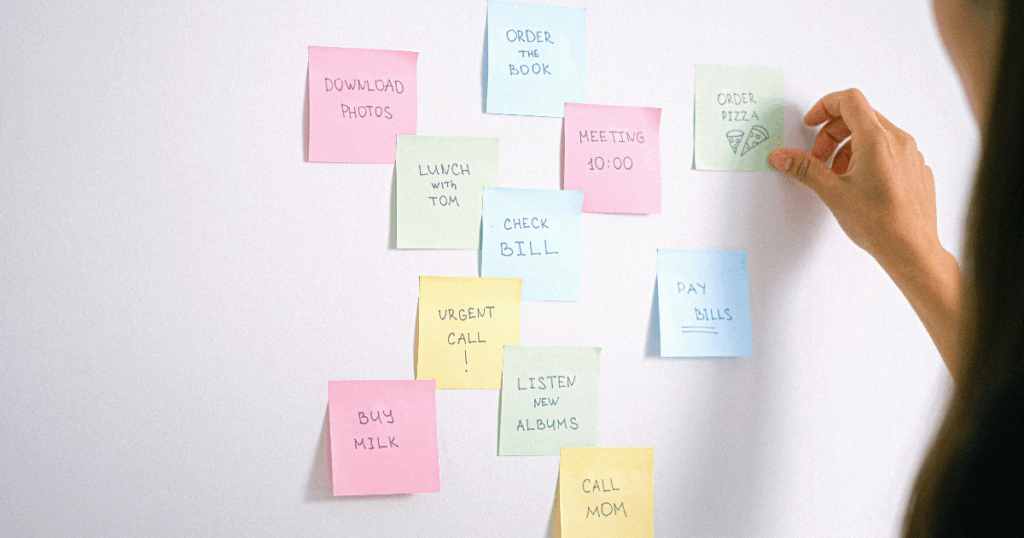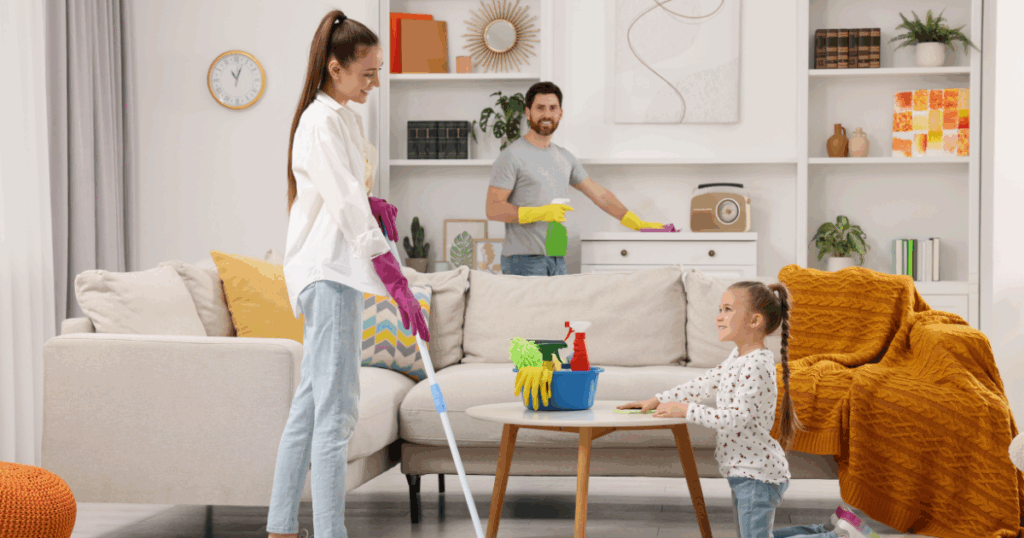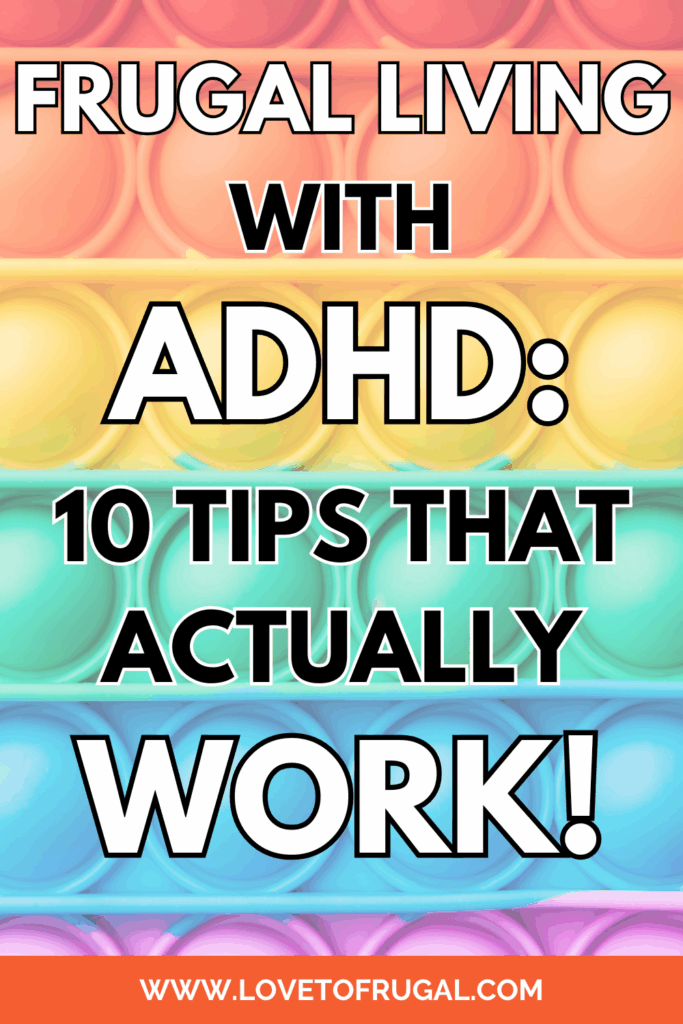Frugal Living with ADHD: Simple Strategies That Actually Work
Frugal living with ADHD isn’t always simple, and if you know someone with ADHD, or live with it yourself, you already get it. I have a couple of close family members who have ADHD (aka Neurodivergent), and I’ve seen firsthand how challenging even the smallest tasks can feel some days. Things like sticking to a budget, remembering when a bill is due, or keeping up with housework can quickly snowball into frustration. And let’s be real—frugal living can be hard enough without a brain that wants to do everything at once (and nothing at the same time!).
That’s why I wanted to write this post. It’s personal. I’ve spent years trying to support the people I love as they navigate everyday life with ADHD, and I know traditional budgeting tips just don’t always work. What they need (and maybe what you need too) are systems that are flexible, forgiving, and tailored to how their brain actually functions—not how someone else says it should.
So if you’ve ever felt like you’re “bad” at budgeting, or you’ve beaten yourself up over piled up laundry, impulse spending, or unfinished projects, I want you to know this: you’re not alone. Frugal living is not out of reach for ADHD brains—it just might look a little different, and that’s okay. Let’s talk about how to make it work in real life, with small, realistic steps that feel doable and not overwhelming.
This post may contain affiliate links, which means that if you buy a suggested product, I will earn a small commission, at no extra cost to you. For more information, see my disclosure page.

Understanding the ADHD Brain (and Why Frugal Living Can Feel So Hard)
Before we dive into practical tips, I think it’s important to take a step back and understand a little about how ADHD (and other neurodivergent conditions) affect everyday life. ADHD isn’t just about being easily distracted. It’s actually a difference in how the brain manages tasks, focus, motivation, and emotions. Things that seem simple—like paying a bill on time or sticking to a cleaning schedule—can require a lot more mental effort for someone with ADHD.
Here are just a few ways ADHD can show up:
- Executive dysfunction: Trouble with planning, time management, organizing tasks, or starting things.
- Impulsivity: Making quick decisions (like spending money) without pausing to think it through.
- Emotional dysregulation: Big emotions can hijack routines or lead to guilt and overwhelm.
- Working memory challenges: Forgetting things like due dates, grocery items, or what you just walked into the room to do.
So when we talk about frugal living and living with ADHD, we’re not just trying to “follow a budget” or “clean the kitchen every night.” We’re trying to work with a brain that’s wired to think and function differently—and that’s a powerful shift.
Now, let’s talk about some real-life strategies that can help make frugal living feel possible, even on the tough days.
Simplify Your Budget (and Automate It Wherever You Can)
I’ve watched firsthand how traditional budgets can feel overwhelming for someone with ADHD. All those tiny categories, the pressure to keep track of every little transaction—it can cause more anxiety than clarity.
That’s why keeping it simple is so important. It’s not about tracking every penny; it’s about creating a few easy-to-follow categories (like Needs, Wants, and Savings) and letting automation take care of what doesn’t need your daily attention.
Set up automatic bill pay. Move a set amount to savings on payday. Use a budgeting app that syncs to your bank and shows where your money is going at a glance.
Frugal living with ADHD means creating a system that works even when executive function is low.

Meal Planning That Doesn’t Overwhelm
Dinner shouldn’t be a daily crisis. But for folks with ADHD, figuring out what to cook every night can feel like an unsolvable puzzle.
The solution? Low-pressure meal planning.
Here are some ideas that might help you simplify your meal planning routine:
- Create a weekly theme (like meatloaf MondayTaco Tuesday or Pasta Thursday).
- Keep a “no-brainer” list of go-to meals that are fast, familiar, and inexpensive.
- Pre-cut or prep ingredients on a good energy day to make things easier later.
- Batch cook and freeze extras for those low-motivation nights.
You don’t have to be a gourmet cook to enjoy eating at home. You just need to be able to plan enough so you don’t have to default to pricey takeout when decision fatigue hits.
Check out: Reverse Meal Planning: Easy Solutions To Save Time And Money
Impulse Spending: Tame It Without Shame
This one’s tender. I’ve seen how easy it is for my loved ones with ADHD to fall into the impulse spending trap—especially when they’re overwhelmed, overstimulated, or feeling emotional.
Instead of shaming the behavior, try to understand the “why” behind it. Then create systems that work with those habits, not against them.
Some ideas:
- Set a 24-hour rule for purchases over a certain amount.
- Remove shopping apps from your phone.
- Add a “fun money” line to your budget so you can spend without guilt.
- Use prepaid cards to stay on track while still allowing freedom.
When you choose frugal living and living with ADHD, it isn’t about rigid restriction—it’s about mindful spending that leaves room for joy and responsibility.
Declutter in Small Bursts (and Make It Visual!)
Clutter is overwhelming for everyone—but especially for people with ADHD. Too much visual input can make it impossible to focus or relax.
But here’s the key: You don’t have to organize the whole house in one weekend.
I suggest starting with micro-goals: decluttering just one drawer, one basket, or one shelf at a time. Use timers (15–20 minutes max) to make it manageable and not too tiring. I’ve seen firsthand how a cluttered room can be almost debilitating to someone with ADHD. They see the whole room as a mess and it’s overwhelming to them. They have no idea where to to start so they walk out and just close the door. But when we can start in a corner and work outwards or take just a small section of the room, it’s so much more manageable.
Also, another good tip when you’re trying to get organized is to make your systems visual. Use clear bins, labels, or even color-coding to make things easier to see and use. Out of sight really can mean out of mind for neurodivergent folks.
Use Timers, Reminders, and External Cues
One of my favorite things to share with my family is this: You don’t need to rely on your brain alone—especially for time management.
Using external cues can be a game-changer.
- Set phone reminders with custom labels (“Pay water bill,” “Move laundry”). I don’t have ADHD, but I do this all the time just to help me remember tasks that I need to do.
- Use a kitchen timer or the Pomodoro technique (25 mins work, 5 mins rest).
- Post sticky notes in high-traffic areas.
- Try visual timers for chores like dishwashing or cleaning up a room.
These little nudges help build consistency and keep important tasks from falling through the cracks.

Create Easy-to-Access Routines and Checkpoints
Rigid routines can backfire, but supportive routines—the kind that offer structure without suffocation—can be incredibly helpful for frugal living and living with ADHD.
Many people with ADHD have found success with:
- Morning and evening checklists.
- Sunday reset routines (prep food, glance at the budget, do laundry).
- Keeping all “leaving the house” items in a basket by the door.
- Designating one day each week as “bill check-in” or “money moment” day.
When the steps are predictable, you save time, money, and mental energy.
Make Cleaning ADHD-Friendly
The typical cleaning checklist doesn’t always cut it for someone with ADHD. What’s worked for my family is creating cleaning tasks that are short, specific, and even a little fun.
Here are a few helpful tips:
- Turn on a podcast or upbeat music while tidying up.
- Break tasks into tiny chunks (“Wipe kitchen counters” vs. “Clean kitchen”).
- Keep cleaning supplies in multiple rooms so they’re always handy.
- Try a “power tidy” at the same time each day (just 10 minutes!).
Living with ADHD means learning to manage your space in ways that you can maintain long term—even if it doesn’t look like the cover of a magazine.
Here’s a great post to check out: Frugal House Cleaning Tips-Easy, Practical Ways To Save Money

Batch Tasks and Build in Buffers
Task-switching can be brutal for neurodivergent brains. I’ve learned that batching similar tasks together helps reduce overwhelm and improve focus.
For example:
- Pay bills all at once on a specific day.
- Run errands in one trip.
- Cook double recipes and freeze one batch.
Also—build in transition time between tasks or appointments. This gives your brain a chance to reset, which can prevent meltdowns and fatigue.
Frugal living with ADHD isn’t just about saving money—it’s about protecting your energy too.
Track Wins, Not Just Goals
Sometimes we forget how important it is to celebrate progress—especially the kind that doesn’t show up in bank accounts or to-do lists.
Encourage yourself (or your loved one) to:
- Keep a “small wins” journal.
- Celebrate sticking to your budget most of the time.
- Recognize when you cooked at home instead of eating out.
- Acknowledge those no-spend days, even if they were accidental!
Positive reinforcement fuels motivation far more effectively than guilt ever will.
Know That “Frugal” Doesn’t Mean Deprived
And finally—please hear this. Being frugal doesn’t mean stripping all joy and spontaneity from your life. Especially for someone with ADHD, a little fun and flexibility can go a long way in staying motivated.
Frugal living and living with ADHD means:
- Prioritizing what matters to you.
- Cutting back on what drains you.
- Making space for what lights you up.
Whether it’s budgeting in your coffee runs, saying yes to a hobby, or splurging on noise-canceling headphones that help you function—it’s okay to spend intentionally.
You may be interested in: Finding Joy In Simple Living: Being Happy On Less
Final Thoughts: From One Caring Heart to Another
If you’ve made it this far, thank you. This post wasn’t just a list of tips—it was a love letter to the people I care about most. Watching someone you love struggle with things that seem “simple” can be heartbreaking. And if you’re the one with ADHD, I want you to know: you’re not lazy. You’re not broken. You’re not failing.
Your brain is just wired differently, and with the right systems, frugal living and living with ADHD is possible. In fact, it can even be empowering. Frugal living doesn’t have to mean spreadsheets and rigid routines. It can be flexible, forgiving, and designed to fit how your brain works.
Start small. Pick just one or two strategies that resonate and try them out without pressure. If they don’t work? That’s okay. You get to tweak and try again. That’s not failure—that’s progress.
I hope this post helps you (or someone you love) feel a little more seen, a little more capable, and a whole lot more hopeful.
You’ve got this. And I’m cheering you on.
For more money-saving tips and strategies, be sure to subscribe to our newsletter at Love to Frugal! You can also follow me on Pinterest, Facebook & Instagram for even more money saving, frugal living tips!
Other Posts You May Also Be Interested In:
How to Cut Monthly Expenses: 20 Practical Tips for Saving Money
How to Track Your Spending And Save More Money
Easy Ways To Improve Your Finances


